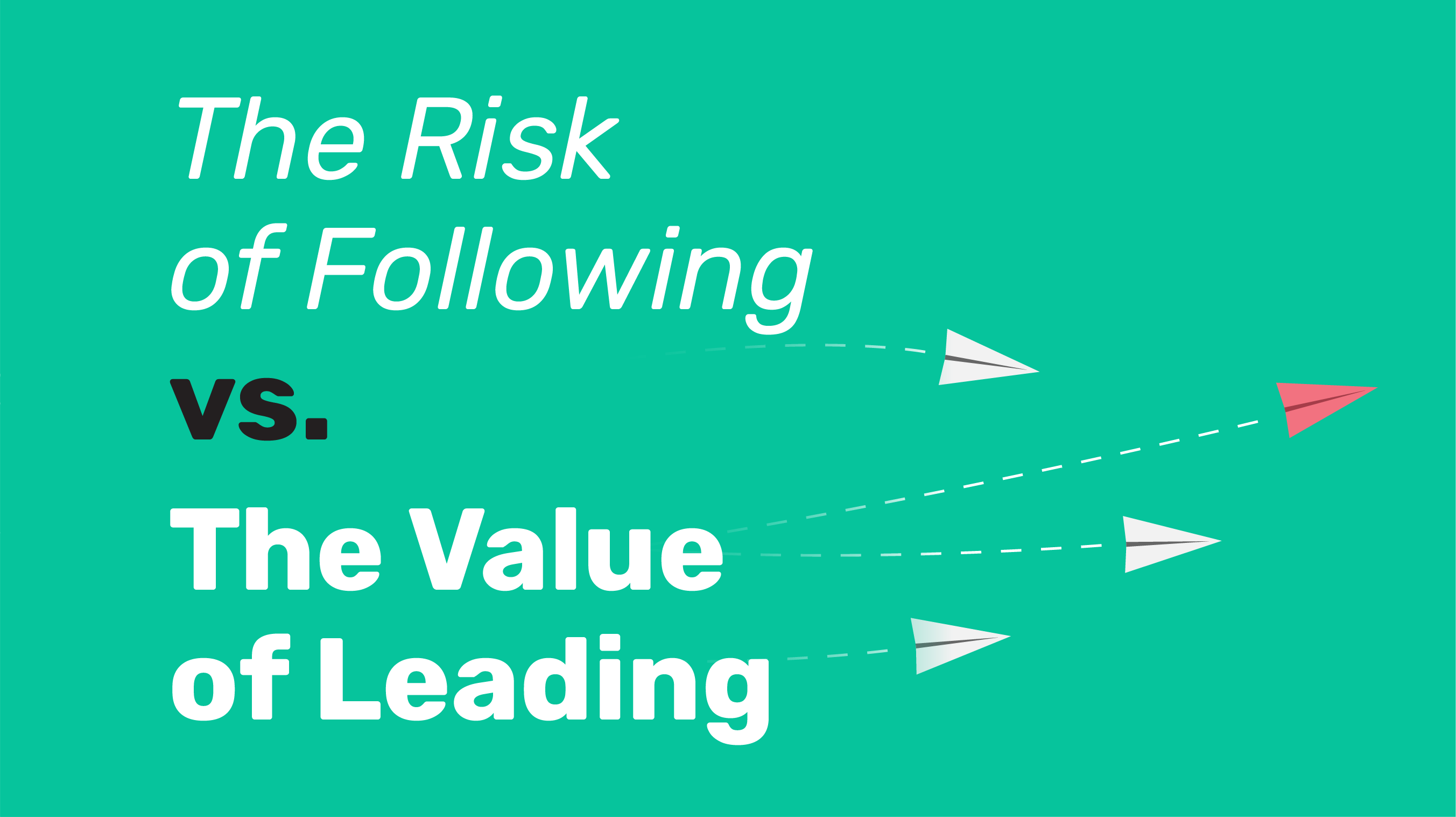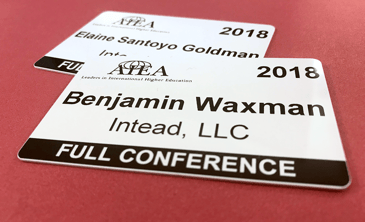
Reflecting on AIEA conversations and what we are seeing in the field, I find myself thinking about the risk of being a follower and the value of being a strategic leader.
- Followers see where the crowd is headed and go there without due diligence.
- Leaders see where the crowd is headed and then check the numbers.
This is important. Increasingly so.
The effort to recruit international students is heating up in the US. The pressure on university administrators is growing. With India and China sending the most students to the US, most newcomers to the field – the universities finally joining the fray and looking to diversify their student body – are turning to these source countries. It can be a mistake.
We are seeing the global education agent network being pressured to produce more students for more campuses. That increased pressure is going to bring us renewed stories of fraud and inappropriate recruiting behavior. We don't want to see anyone caught up in that mess.
It is important, REALLY important, to align your team with talent – the kind of partners who don't cut corners and have your best interests at heart. This field is full of questionable characters, as we all know. Many of us have the scars to prove it.
Following our travels to San Diego for our Annual Student Recruitment Bootcamp and moving on to DC for AIEA, the Intead team is grateful for all of the opportunities to connect face-to-face with you, our colleagues and friends in such a challenging time for our industry. (More on our Bootcamp in a post in March.) Focusing on AIEA for a moment, we have to thank AIEA's Darla Deardorff for feeding so many of us with great information and wonderful food for a few days in DC. The AIEA conference was well run and well delivered. Informational and so often inspiring.
During the conference, we had the pleasure of giving presentations on enrollment trends with Kaplan International and on US–India university partnerships with Monmouth University and Sannam S4. Both sessions were filled with lively discussion and audience engagement. As always, we shared ideas and had fun learning from each other. Thank you to all who attended! It is always a pleasure.
Read on for more reflections and insights from the conferences and my thoughts on enrollment trends and predictions.
Conference Reflections

During the AIEA conference, Intead hosted two small dinner parties at an American nouveau restaurant called New Heights and another at a Syrian/Lebanese restaurant called Mama Ayesha’s. Both are well worth a visit if you are in the Woodley-Park neighborhood in DC. Our guests represented a great and eclectic mix of nationalities and backgrounds which led to fabulous dinner conversation over great food. These encounters add so much to our conference experiences.
A few personal observations:
- The State Department’s EducationUSA staff are working really hard in a very challenging environment. Kudos to them for showing up at AIEA and sharing their expertise. They put on a brave and tactful face. The reality is that the White House is working against their mission. It’s not their fault. We encourage them to continue to put US education out there as best they can.
- Shorelight Education is altering and disrupting the playing field for everyone. This will be interesting to watch.
- Anticipated declines: As always, opinions differ on what the future holds for international student mobility. While I heard some optimistic projections, the reality is that the overall trend for the coming year is likely to see continued declines in international student enrollment. Intead anticipates small US enrollment declines in students from China and India which will not be offset by small enrollment growth from other countries such as Japan, Taiwan, and South Africa. These are my predictions based on anecdotes and historical data. With full candor, we could be wrong here. With full humility, we have been right before. Time will tell.
- Agent network pressures: Align your institution with talent and integrity. If you are just getting started in building an agent network, start with AIRC and move on to ICEF as sources of connections and support. You still need to vet your agent partners carefully and thoroughly. Building a strong agent recruitment pipeline takes a lot of time and effort. Experience in doing this work is invaluable.
- Industry shake out: A very recent WSJ analysis of more than 1,000 US institutions shows overall enrollment declines in 20% of schools between 2011-2016 (this represents total student enrollments, not just international). Many feel the long-awaited industry shakeout is here. That has been said before and yet the institutions hold on, just eking it out. No question, many institutions are struggling and need to restructure their approach to revenue-expense. Much easier said than done. Few are adjusting effectively and those that are not will continue to eke it out until they eventually fail. There will be mergers.
- Future opportunity: International students are a small overall segment of enrollments in the US (roughly 1M students). They are hard to reach and require specialized marketing skills and connections in an increasingly competitive landscape. The next enrollment trend will be non-traditional students (domestic and international) which represent roughly 5M enrollments. They are equally hard to reach and require specialized marketing skills and connections. Their numbers are growing and each non-traditional segment has unique needs and interests. Want more information? You're in luck! (Watch this space).
- Leading with vision: It is the rare institution with the entrepreneurial vision to innovate what they offer and how they offer it. In challenging times, these are the skills that often lead the way out of the proverbial darkness. Now is the time to take a good, hard look at your approach to innovation, your ability and willingness to explore new possibilities, and, where necessary, advocate for change.
The Intead team always starts with reviewing the data. Your website traffic (when was the last time you analyzed your Google Analytics data?) is the best place to start. And there is so much more data at your fingertips from email and social media campaign results to basic conversion funnel analysis.
This data tells you where to focus for the greatest possible opportunities. It tells you which recruiting sources are working best, which content engages, and which marketing activities convert prospects. Ignoring the data available almost guarantees that your marketing budget will be misspent.
The analysis takes a bit of 1) time, 2) focus and 3) expertise. We have that here, all three of them.
The analysis guides the creative process of reaching and engaging audience segments that will find your offering personally valuable. Ask us to help and you'll be in a strong position to lead rather than follow blindly.
Let us help you confirm where you are going and then point the way for your colleagues.
NEXT WEEK: How to move the needle based on where you are now.
BONUS ARTICLE: Shaking up the leadership model in higher education from McKinsey & Company

